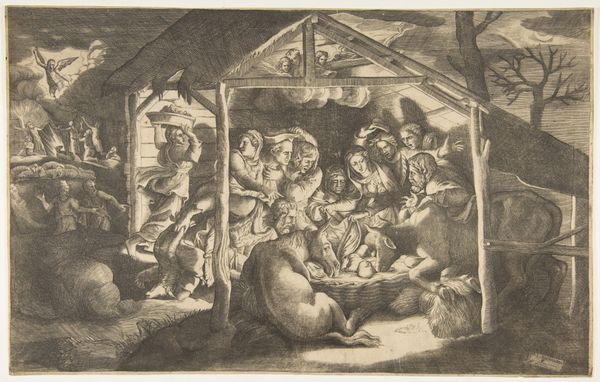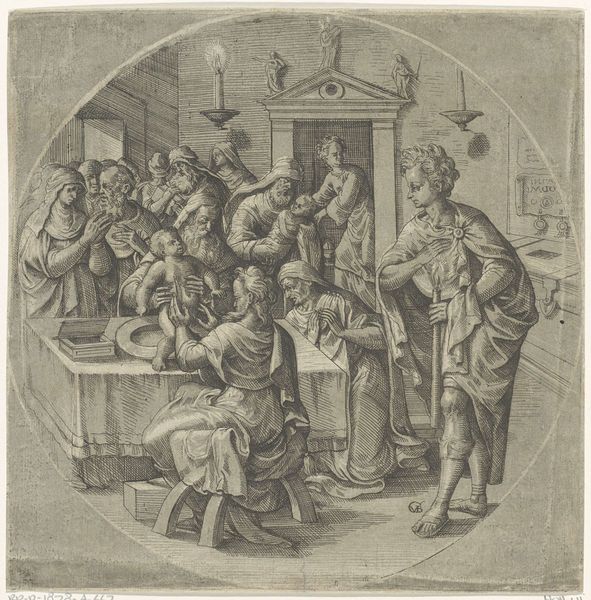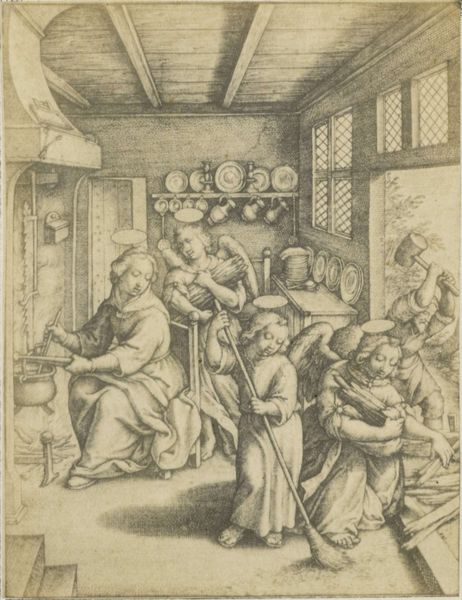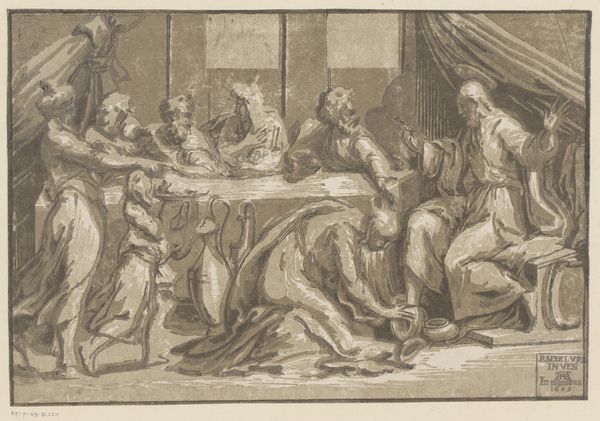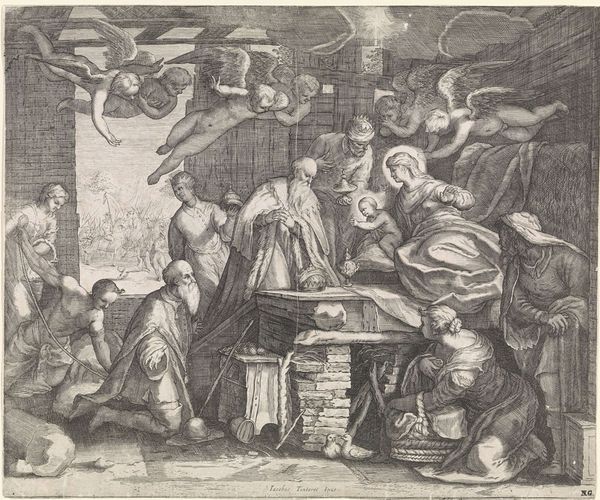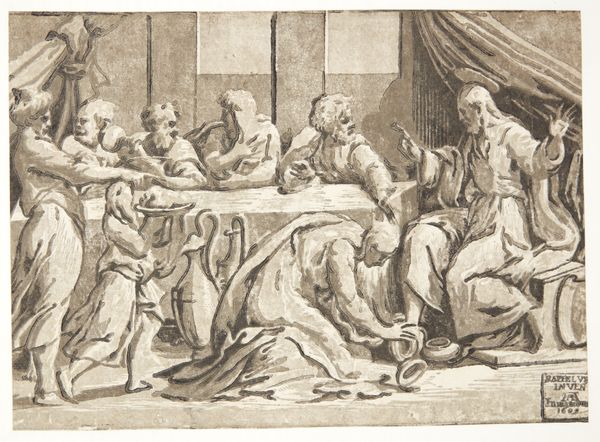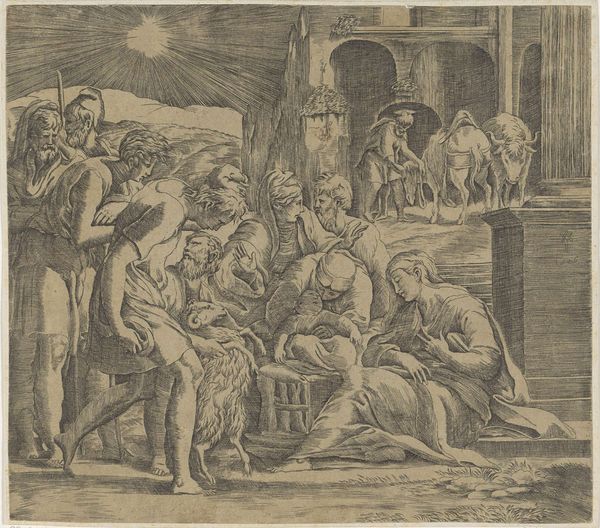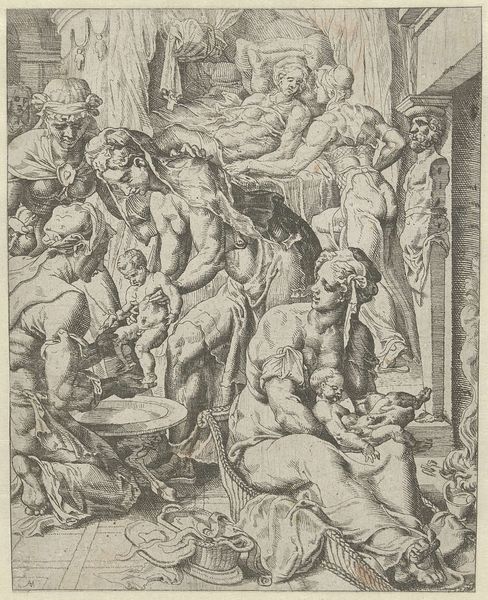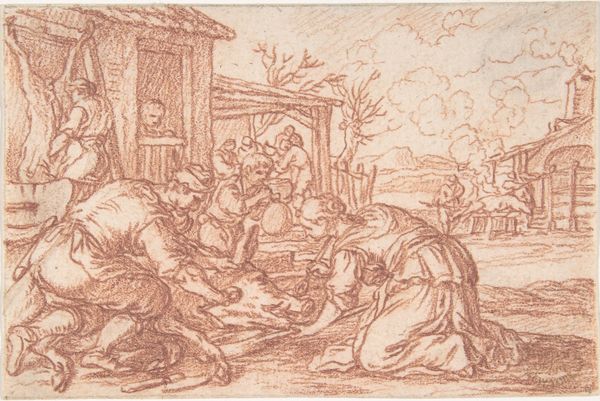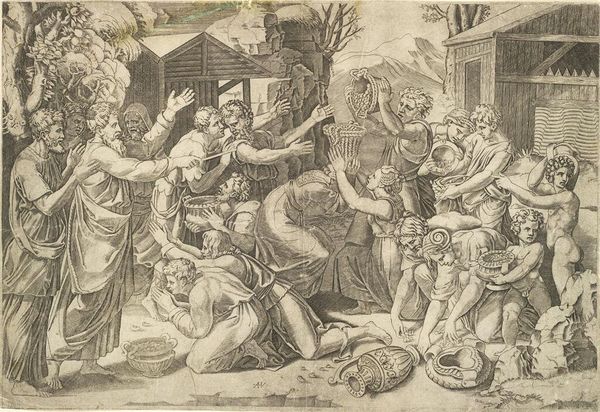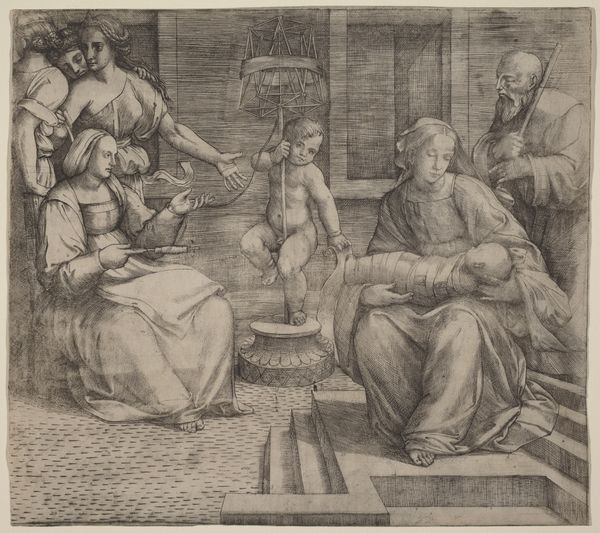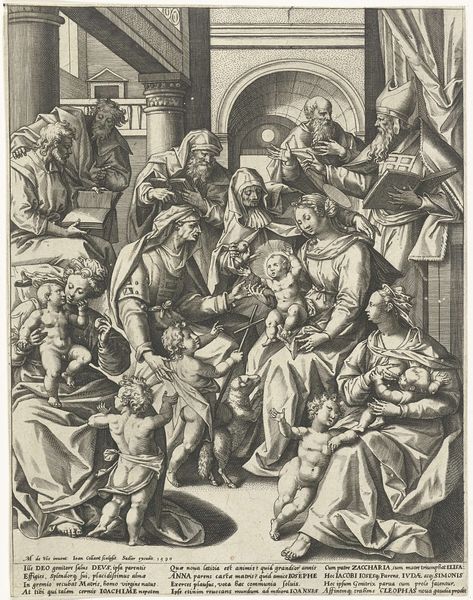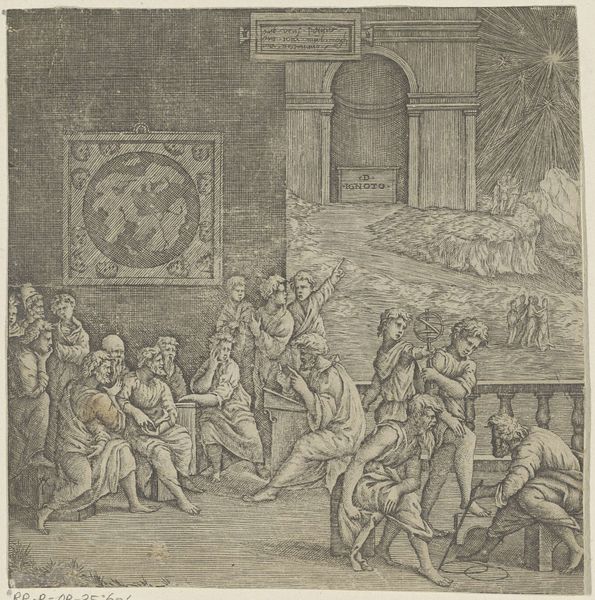
print, engraving
#
narrative-art
# print
#
figuration
#
form
#
11_renaissance
#
line
#
history-painting
#
northern-renaissance
#
engraving
Dimensions: height 234 mm, width 236 mm
Copyright: Rijks Museum: Open Domain
Curator: Immediately striking. It feels incredibly intimate and contained, all within this circular frame. It's a whirlwind of activity held in check. Editor: This is "Adoration of the Shepherds" by Chrispijn van den Broeck, created in 1571. It's an engraving, a printmaking technique that involves cutting lines into a metal plate to hold ink. You see, the production of prints allowed for the wide dissemination of images, influencing popular piety and artistic styles. Curator: The divine light emanating from the baby Christ is, of course, a key visual symbol. But what really draws me in is the gaze. Mary’s tender downward look mirrors Joseph in the background, both anchors in this flurry of the adoring shepherds, even those disembodied cherubic heads peering over the manger. Editor: Engravings like this demanded significant labor. Each line meticulously etched, each plate carefully inked and printed. We tend to focus on the final image, but I am thinking of the workshop itself, the apprentice grinding pigments. Consider the physical labor of this artistic and cultural production. Curator: Absolutely. And van den Broeck understood that images, multiplied and shared, become cultural currency. He tapped into a well-established visual vocabulary for this narrative—the shepherds representing the humble accepting the divine made accessible. It’s propaganda, but effective because of the depth of meaning attached to the scene itself. Look at the shepherd’s bagpipe; the musical offering symbolizing their humble status, the circular format recalling ancient Tondi… it's so full of learned references. Editor: So while tapping into tradition, its accessibility shouldn’t be understated. This wasn't a unique painting for a wealthy patron; multiple copies meant wider viewership. This highlights art’s dual role, its status as craft and also capital, influencing minds and, potentially, economies. Curator: True. That duality enriches our understanding. Seeing the iconic themes interwoven with production and material considerations helps bridge our appreciation. Thank you. Editor: The perspective enriches the image so much, making the image quite engaging.
Comments
No comments
Be the first to comment and join the conversation on the ultimate creative platform.
